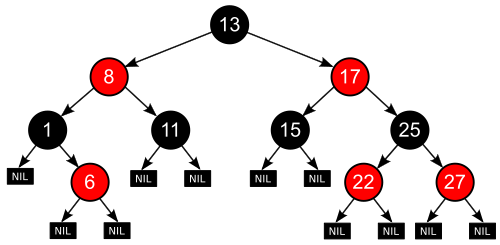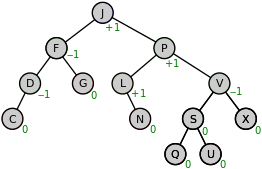Go18DS (Go 1.18+ Data Structures)
Implementation of various data structures and algorithms in Go.
This is based on the GoDS library developed by Emir Pasic. Since the target is for Go 1.18+, it is inherently generic-aware.
Data Structures
Containers
All data structures implement the container interface with the following methods:
type Container[T any] interface {
Empty() bool
Size() int
Clear()
Values() []T
}
Containers are either ordered or unordered. All ordered containers provide stateful iterators and some of them allow enumerable functions.
| Data | Structure | Ordered | Iterator | Enumerable | Referenced by |
|---|---|---|---|---|---|
| Lists | |||||
| ArrayList | yes | yes* | yes | index | |
| SinglyLinkedList | yes | yes | yes | index | |
| DoublyLinkedList | yes | yes* | yes | index | |
| Sets | |||||
| HashSet | no | no | no | index | |
| TreeSet | yes | yes* | yes | index | |
| LinkedHashSet | yes | yes* | yes | index | |
| Stacks | |||||
| LinkedListStack | yes | yes | no | index | |
| ArrayStack | yes | yes* | no | index | |
| Maps | |||||
| HashMap | no | no | no | key | |
| TreeMap | yes | yes* | yes | key | |
| LinkedHashMap | yes | yes* | yes | key | |
| HashBidiMap | no | no | no | key* | |
| TreeBidiMap | yes | yes* | yes | key* | |
| Trees | |||||
| RedBlackTree | yes | yes* | no | key | |
| AVLTree | yes | yes* | no | key | |
| BTree | yes | yes* | no | key | |
| BinaryHeap | yes | yes* | no | index | |
| *reversible | *bidirectional |
Lists
A list is a data structure that stores values and may have repeated values.
Implements Container interface.
type List[T comparable] interface {
Get(index int) (T, bool)
Remove(index int)
Add(values ...T)
Contains(values ...T) bool
Sort(comparator utils.Comparator[T])
Swap(index1, index2 int)
Insert(index int, values ...T)
Set(index int, value T)
containers.Container[T]
// Empty() bool
// Size() int
// Clear()
// Values() []T
}
ArrayList
A list backed by a dynamic array that grows and shrinks implicitly.
Implements List, IteratorWithIndex, EnumerableWithIndex, JSONSerializer and JSONDeserializer interfaces.
package main
import (
"github.com/daichi-m/go18ds/lists/arraylist"
"github.com/daichi-m/go18ds/utils"
)
// ArrayListExample to demonstrate basic usage of ArrayList
func main() {
list := arraylist.New[string]()
list.Add("a") // ["a"]
list.Add("c", "b") // ["a","c","b"]
list.Sort(utils.StringComparator) // ["a","b","c"]
_, _ = list.Get(0) // "a",true
_, _ = list.Get(100) // nil,false
_ = list.Contains("a", "b", "c") // true
_ = list.Contains("a", "b", "c", "d") // false
list.Swap(0, 1) // ["b","a",c"]
list.Remove(2) // ["b","a"]
list.Remove(1) // ["b"]
list.Remove(0) // []
list.Remove(0) // [] (ignored)
_ = list.Empty() // true
_ = list.Size() // 0
list.Add("a") // ["a"]
list.Clear() // []
}
SinglyLinkedList
A list where each element points to the next element in the list.
Implements List, IteratorWithIndex, EnumerableWithIndex, JSONSerializer and JSONDeserializer interfaces.
package main
import (
sll "github.com/daichi-m/go18ds/lists/singlylinkedlist"
"github.com/daichi-m/go18ds/utils"
)
// SinglyLinkedListExample to demonstrate basic usage of SinglyLinkedList
func main() {
list := sll.New[string]()
list.Add("a") // ["a"]
list.Append("b") // ["a","b"] (same as Add())
list.Prepend("c") // ["c","a","b"]
list.Sort(utils.StringComparator) // ["a","b","c"]
_, _ = list.Get(0) // "a",true
_, _ = list.Get(100) // nil,false
_ = list.Contains("a", "b", "c") // true
_ = list.Contains("a", "b", "c", "d") // false
list.Remove(2) // ["a","b"]
list.Remove(1) // ["a"]
list.Remove(0) // []
list.Remove(0) // [] (ignored)
_ = list.Empty() // true
_ = list.Size() // 0
list.Add("a") // ["a"]
list.Clear() // []
}
DoublyLinkedList
A list where each element points to the next and previous elements in the list.
Implements List, IteratorWithIndex, EnumerableWithIndex, JSONSerializer and JSONDeserializer interfaces.
package main
import (
dll "github.com/daichi-m/go18ds/lists/doublylinkedlist"
"github.com/daichi-m/go18ds/utils"
)
// DoublyLinkedListExample to demonstrate basic usage of DoublyLinkedList
func main() {
list := dll.New[string]()
list.Add("a") // ["a"]
list.Append("b") // ["a","b"] (same as Add())
list.Prepend("c") // ["c","a","b"]
list.Sort(utils.StringComparator) // ["a","b","c"]
_, _ = list.Get(0) // "a",true
_, _ = list.Get(100) // nil,false
_ = list.Contains("a", "b", "c") // true
_ = list.Contains("a", "b", "c", "d") // false
list.Remove(2) // ["a","b"]
list.Remove(1) // ["a"]
list.Remove(0) // []
list.Remove(0) // [] (ignored)
_ = list.Empty() // true
_ = list.Size() // 0
list.Add("a") // ["a"]
list.Clear() // []
}
Sets
A set is a data structure that can store elements and has no repeated values. It is a computer implementation of the mathematical concept of a finite set. Unlike most other collection types, rather than retrieving a specific element from a set, one typically tests an element for membership in a set. This structure is often used to ensure that no duplicates are present in a container.
Implements Container interface.
type Set[T comparable] interface {
Add(elements ...T)
Remove(elements ...T)
Contains(elements ...T) bool
containers.Container[T]
// Empty() bool
// Size() int
// Clear()
// Values() []T
}
HashSet
A set backed by a hash table (actually a Go's map). It makes no guarantees as to the iteration order of the set.
Implements Set, JSONSerializer and JSONDeserializer interfaces.
import "github.com/daichi-m/go18ds/sets/hashset"
// HashSetExample to demonstrate basic usage of HashSet
func main() {
set := hashset.New[int]() // empty (keys are of type int)
set.Add(1) // 1
set.Add(2, 2, 3, 4, 5) // 3, 1, 2, 4, 5 (random order, duplicates ignored)
set.Remove(4) // 5, 3, 2, 1 (random order)
set.Remove(2, 3) // 1, 5 (random order)
set.Contains(1) // true
set.Contains(1, 5) // true
set.Contains(1, 6) // false
_ = set.Values() // []int{5,1} (random order)
set.Clear() // empty
set.Empty() // true
set.Size() // 0
}
TreeSet
A set backed by a red-black tree to keep the elements ordered with respect to the comparator.
Implements Set, IteratorWithIndex, EnumerableWithIndex, JSONSerializer and JSONDeserializer interfaces.
package main
import "github.com/daichi-m/go18ds/sets/treeset"
// TreeSetExample to demonstrate basic usage of TreeSet
func main() {
set := treeset.NewWithIntComparator() // empty
set.Add(1) // 1
set.Add(2, 2, 3, 4, 5) // 1, 2, 3, 4, 5 (in order, duplicates ignored)
set.Remove(4) // 1, 2, 3, 5 (in order)
set.Remove(2, 3) // 1, 5 (in order)
set.Contains(1) // true
set.Contains(1, 5) // true
set.Contains(1, 6) // false
_ = set.Values() // []int{1,5} (in order)
set.Clear() // empty
set.Empty() // true
set.Size() // 0
}
LinkedHashSet
A set that preserves insertion-order. Data structure is backed by a hash table to store values and doubly-linked list to store insertion ordering.
Implements Set, IteratorWithIndex, EnumerableWithIndex, JSONSerializer and JSONDeserializer interfaces.
package main
import "github.com/daichi-m/go18ds/sets/linkedhashset"
// LinkedHashSetExample to demonstrate basic usage of LinkedHashSet
func main() {
set := linkedhashset.New[int]() // empty
set.Add(5) // 5
set.Add(4, 4, 3, 2, 1) // 5, 4, 3, 2, 1 (in insertion-order, duplicates ignored)
set.Remove(4) // 5, 3, 2, 1 (in insertion-order)
set.Remove(2, 3) // 5, 1 (in insertion-order)
set.Contains(1) // true
set.Contains(1, 5) // true
set.Contains(1, 6) // false
_ = set.Values() // []int{5, 1} (in insertion-order)
set.Clear() // empty
set.Empty() // true
set.Size() // 0
}
Stacks
A stack that represents a last-in-first-out (LIFO) data structure. The usual push and pop operations are provided, as well as a method to peek at the top item on the stack.
Implements Container interface.
type Stack[T comparable] interface {
Push(value T)
Pop() (value T, ok bool)
Peek() (value T, ok bool)
containers.Container[T]
// Empty() bool
// Size() int
// Clear()
// Values() []interface{}
}
LinkedListStack
A stack based on a linked list.
Implements Stack, IteratorWithIndex, JSONSerializer and JSONDeserializer interfaces.
package main
import lls "github.com/daichi-m/go18ds/stacks/linkedliststack"
// LinkedListStackExample to demonstrate basic usage of LinkedListStack
func main() {
stack := lls.New[int]() // empty
stack.Push(1) // 1
stack.Push(2) // 1, 2
stack.Values() // 2, 1 (LIFO order)
_, _ = stack.Peek() // 2,true
_, _ = stack.Pop() // 2, true
_, _ = stack.Pop() // 1, true
_, _ = stack.Pop() // nil, false (nothing to pop)
stack.Push(1) // 1
stack.Clear() // empty
stack.Empty() // true
stack.Size() // 0
}
ArrayStack
A stack based on a array list.
Implements Stack, IteratorWithIndex, JSONSerializer and JSONDeserializer interfaces.
package main
import "github.com/daichi-m/go18ds/stacks/arraystack"
// ArrayStackExample to demonstrate basic usage of ArrayStack
func main() {
stack := arraystack.New[int]() // empty
stack.Push(1) // 1
stack.Push(2) // 1, 2
stack.Values() // 2, 1 (LIFO order)
_, _ = stack.Peek() // 2,true
_, _ = stack.Pop() // 2, true
_, _ = stack.Pop() // 1, true
_, _ = stack.Pop() // nil, false (nothing to pop)
stack.Push(1) // 1
stack.Clear() // empty
stack.Empty() // true
stack.Size() // 0
}
Maps
A Map is a data structure that maps keys to values. A map cannot contain duplicate keys and each key can map to at most one value.
Implements Container interface.
// Map interface that all maps implement
type Map[K comparable, V any] interface {
Put(key K, value V)
Get(key K) (value V, found bool)
Remove(key K)
Keys() []K
containers.Container[V]
// Empty() bool
// Size() int
// Clear()
// Values() []interface{}
}
A BidiMap is an extension to the Map. A bidirectional map (BidiMap), also called a hash bag, is an associative data structure in which the key-value pairs form a one-to-one relation. This relation works in both directions by allow the value to also act as a key to key, e.g. a pair (a,b) thus provides a coupling between 'a' and 'b' so that 'b' can be found when 'a' is used as a key and 'a' can be found when 'b' is used as a key.
// BidiMap interface that all bidirectional maps implement (extends the Map interface)
type BidiMap[K comparable, V any] interface {
GetKey(value V) (key K, found bool)
Map[K, V]
}
HashMap
A map based on hash tables. Keys are unordered.
Implements Map, JSONSerializer and JSONDeserializer interfaces.
package main
import "github.com/daichi-m/go18ds/maps/hashmap"
// HashMapExample to demonstrate basic usage of HashMap
func main() {
m := hashmap.New[int, string]() // empty
m.Put(1, "x") // 1->x
m.Put(2, "b") // 2->b, 1->x (random order)
m.Put(1, "a") // 2->b, 1->a (random order)
_, _ = m.Get(2) // b, true
_, _ = m.Get(3) // nil, false
_ = m.Values() // []interface {}{"b", "a"} (random order)
_ = m.Keys() // []interface {}{1, 2} (random order)
m.Remove(1) // 2->b
m.Clear() // empty
m.Empty() // true
m.Size() // 0
}
TreeMap
A map based on red-black tree. Keys are ordered with respect to the comparator.
Implements Map, IteratorWithKey, EnumerableWithKey, JSONSerializer and JSONDeserializer interfaces.
package main
import "github.com/emirpasic/gods/maps/treemap"
func main() {
m := treemap.NewWithIntComparator() // empty (keys are of type int)
m.Put(1, "x") // 1->x
m.Put(2, "b") // 1->x, 2->b (in order)
m.Put(1, "a") // 1->a, 2->b (in order)
_, _ = m.Get(2) // b, true
_, _ = m.Get(3) // nil, false
_ = m.Values() // []interface {}{"a", "b"} (in order)
_ = m.Keys() // []interface {}{1, 2} (in order)
m.Remove(1) // 2->b
m.Clear() // empty
m.Empty() // true
m.Size() // 0
// Other:
m.Min() // Returns the minimum key and its value from map.
m.Max() // Returns the maximum key and its value from map.
}
LinkedHashMap
A map that preserves insertion-order. It is backed by a hash table to store values and doubly-linked list to store ordering.
Implements Map, IteratorWithKey, EnumerableWithKey, JSONSerializer and JSONDeserializer interfaces.
package main
import "github.com/daichi-m/go18ds/maps/linkedhashmap"
// LinkedHashMapExample to demonstrate basic usage of LinkedHashMapExample
func main() {
m := linkedhashmap.New[int, string]() // empty (keys are of type int)
m.Put(2, "b") // 2->b
m.Put(1, "x") // 2->b, 1->x (insertion-order)
m.Put(1, "a") // 2->b, 1->a (insertion-order)
_, _ = m.Get(2) // b, true
_, _ = m.Get(3) // nil, false
_ = m.Values() // []interface {}{"b", "a"} (insertion-order)
_ = m.Keys() // []interface {}{2, 1} (insertion-order)
m.Remove(1) // 2->b
m.Clear() // empty
m.Empty() // true
m.Size() // 0
}
HashBidiMap
A map based on two hashmaps. Keys are unordered.
Implements BidiMap, JSONSerializer and JSONDeserializer interfaces.
package main
import "github.com/daichi-m/go18ds/maps/hashbidimap"
// HashBidiMapExample to demonstrate basic usage of HashMap
func main() {
m := hashbidimap.New[int, string]() // empty
m.Put(1, "x") // 1->x
m.Put(3, "b") // 1->x, 3->b (random order)
m.Put(1, "a") // 1->a, 3->b (random order)
m.Put(2, "b") // 1->a, 2->b (random order)
_, _ = m.GetKey("a") // 1, true
_, _ = m.Get(2) // b, true
_, _ = m.Get(3) // nil, false
_ = m.Values() // []interface {}{"a", "b"} (random order)
_ = m.Keys() // []interface {}{1, 2} (random order)
m.Remove(1) // 2->b
m.Clear() // empty
m.Empty() // true
m.Size() // 0
}
TreeBidiMap
A map based on red-black tree. This map guarantees that the map will be in both ascending key and value order. Other than key and value ordering, the goal with this structure is to avoid duplication of elements (unlike in HashBidiMap), which can be significant if contained elements are large.
Implements BidiMap, IteratorWithKey, EnumerableWithKey, JSONSerializer and JSONDeserializer interfaces.
package main
import (
"github.com/daichi-m/go18ds/maps/treebidimap"
"github.com/daichi-m/go18ds/utils"
)
// TreeBidiMapExample to demonstrate basic usage of TreeBidiMap
func main() {
m := treebidimap.NewWith(utils.NumberComparator[int], utils.StringComparator)
m.Put(1, "x") // 1->x
m.Put(3, "b") // 1->x, 3->b (ordered)
m.Put(1, "a") // 1->a, 3->b (ordered)
m.Put(2, "b") // 1->a, 2->b (ordered)
_, _ = m.GetKey("a") // 1, true
_, _ = m.Get(2) // b, true
_, _ = m.Get(3) // nil, false
_ = m.Values() // []interface {}{"a", "b"} (ordered)
_ = m.Keys() // []interface {}{1, 2} (ordered)
m.Remove(1) // 2->b
m.Clear() // empty
m.Empty() // true
m.Size() // 0
}
Trees
A tree is a widely used data data structure that simulates a hierarchical tree structure, with a root value and subtrees of children, represented as a set of linked nodes; thus no cyclic links.
Implements Container interface.
type Tree[T comparable] interface {
containers.Container[T]
// Empty() bool
// Size() int
// Clear()
// Values() []interface{}
}
RedBlackTree
A red–black tree is a binary search tree with an extra bit of data per node, its color, which can be either red or black. The extra bit of storage ensures an approximately balanced tree by constraining how nodes are colored from any path from the root to the leaf. Thus, it is a data structure which is a type of self-balancing binary search tree.
The balancing of the tree is not perfect but it is good enough to allow it to guarantee searching in O(log n) time, where n is the total number of elements in the tree. The insertion and deletion operations, along with the tree rearrangement and recoloring, are also performed in O(log n) time. Wikipedia
Implements Tree, ReverseIteratorWithKey, JSONSerializer and JSONDeserializer interfaces.

package main
import (
"fmt"
rbt "github.com/daichi-m/go18ds/trees/redblacktree"
)
// RedBlackTreeExample to demonstrate basic usage of RedBlackTree
func main() {
tree := rbt.NewWithIntComparator[string]() // empty(keys are of type int)
tree.Put(1, "x") // 1->x
tree.Put(2, "b") // 1->x, 2->b (in order)
tree.Put(1, "a") // 1->a, 2->b (in order, replacement)
tree.Put(3, "c") // 1->a, 2->b, 3->c (in order)
tree.Put(4, "d") // 1->a, 2->b, 3->c, 4->d (in order)
tree.Put(5, "e") // 1->a, 2->b, 3->c, 4->d, 5->e (in order)
tree.Put(6, "f") // 1->a, 2->b, 3->c, 4->d, 5->e, 6->f (in order)
fmt.Println(tree)
//
// RedBlackTree
// │ ┌── 6
// │ ┌── 5
// │ ┌── 4
// │ │ └── 3
// └── 2
// └── 1
_ = tree.Values() // []interface {}{"a", "b", "c", "d", "e", "f"} (in order)
_ = tree.Keys() // []interface {}{1, 2, 3, 4, 5, 6} (in order)
tree.Remove(2) // 1->a, 3->c, 4->d, 5->e, 6->f (in order)
fmt.Println(tree)
//
// RedBlackTree
// │ ┌── 6
// │ ┌── 5
// └── 4
// │ ┌── 3
// └── 1
tree.Clear() // empty
tree.Empty() // true
tree.Size() // 0
}
Extending the red-black tree's functionality has been demonstrated in the following example.
AVLTree
AVL tree is a self-balancing binary search tree. In an AVL tree, the heights of the two child subtrees of any node differ by at most one; if at any time they differ by more than one, rebalancing is done to restore this property. Lookup, insertion, and deletion all take O(log n) time in both the average and worst cases, where n is the number of nodes in the tree prior to the operation. Insertions and deletions may require the tree to be rebalanced by one or more tree rotations.
AVL trees are often compared with red–black trees because both support the same set of operations and take O(log n) time for the basic operations. For lookup-intensive applications, AVL trees are faster than red–black trees because they are more strictly balanced. Wikipedia
Implements Tree, ReverseIteratorWithKey, JSONSerializer and JSONDeserializer interfaces.

AVL tree with balance factors (green)
package main
import (
"fmt"
avl "github.com/daichi-m/go18ds/trees/avltree"
)
// AVLTreeExample to demonstrate basic usage of AVLTree
func main() {
tree := avl.NewWithIntComparator[string]() // empty(keys are of type int)
tree.Put(1, "x") // 1->x
tree.Put(2, "b") // 1->x, 2->b (in order)
tree.Put(1, "a") // 1->a, 2->b (in order, replacement)
tree.Put(3, "c") // 1->a, 2->b, 3->c (in order)
tree.Put(4, "d") // 1->a, 2->b, 3->c, 4->d (in order)
tree.Put(5, "e") // 1->a, 2->b, 3->c, 4->d, 5->e (in order)
tree.Put(6, "f") // 1->a, 2->b, 3->c, 4->d, 5->e, 6->f (in order)
fmt.Println(tree)
//
// AVLTree
// │ ┌── 6
// │ ┌── 5
// └── 4
// │ ┌── 3
// └── 2
// └── 1
_ = tree.Values() // []interface {}{"a", "b", "c", "d", "e", "f"} (in order)
_ = tree.Keys() // []interface {}{1, 2, 3, 4, 5, 6} (in order)
tree.Remove(2) // 1->a, 3->c, 4->d, 5->e, 6->f (in order)
fmt.Println(tree)
//
// AVLTree
// │ ┌── 6
// │ ┌── 5
// └── 4
// └── 3
// └── 1
tree.Clear() // empty
tree.Empty() // true
tree.Size() // 0
}
BTree
B-tree is a self-balancing tree data structure that keeps data sorted and allows searches, sequential access, insertions, and deletions in logarithmic time. The B-tree is a generalization of a binary search tree in that a node can have more than two children.
According to Knuth's definition, a B-tree of order m is a tree which satisfies the following properties:
- Every node has at most m children.
- Every non-leaf node (except root) has at least ⌈m/2⌉ children.
- The root has at least two children if it is not a leaf node.
- A non-leaf node with k children contains k−1 keys.
- All leaves appear in the same level
Each internal node’s keys act as separation values which divide its subtrees. For example, if an internal node has 3 child nodes (or subtrees) then it must have 2 keys: a1 and a2. All values in the leftmost subtree will be less than a1, all values in the middle subtree will be between a1 and a2, and all values in the rightmost subtree will be greater than a2.Wikipedia
Implements Tree, ReverseIteratorWithKey, JSONSerializer and JSONDeserializer interfaces.

import (
"fmt"
"github.com/daichi-m/go18ds/trees/btree"
)
// BTreeExample to demonstrate basic usage of BTree
func main() {
tree := btree.NewWithIntComparator[string](https://raw.githubusercontent.com/daichi-m/go18ds/main/3) // empty (keys are of type int)
tree.Put(1, "x") // 1->x
tree.Put(2, "b") // 1->x, 2->b (in order)
tree.Put(1, "a") // 1->a, 2->b (in order, replacement)
tree.Put(3, "c") // 1->a, 2->b, 3->c (in order)
tree.Put(4, "d") // 1->a, 2->b, 3->c, 4->d (in order)
tree.Put(5, "e") // 1->a, 2->b, 3->c, 4->d, 5->e (in order)
tree.Put(6, "f") // 1->a, 2->b, 3->c, 4->d, 5->e, 6->f (in order)
tree.Put(7, "g") // 1->a, 2->b, 3->c, 4->d, 5->e, 6->f, 7->g (in order)
fmt.Println(tree)
// BTree
// 1
// 2
// 3
// 4
// 5
// 6
// 7
_ = tree.Values() // []interface {}{"a", "b", "c", "d", "e", "f", "g"} (in order)
_ = tree.Keys() // []interface {}{1, 2, 3, 4, 5, 6, 7} (in order)
tree.Remove(2) // 1->a, 3->c, 4->d, 5->e, 6->f, 7->g (in order)
fmt.Println(tree)
// BTree
// 1
// 3
// 4
// 5
// 6
// 7
tree.Clear() // empty
tree.Empty() // true
tree.Size() // 0
// Other:
tree.Height() // gets the height of the tree
tree.Left() // gets the left-most (min) node
tree.LeftKey() // get the left-most (min) node's key
tree.LeftValue() // get the left-most (min) node's value
tree.Right() // get the right-most (max) node
tree.RightKey() // get the right-most (max) node's key
tree.RightValue() // get the right-most (max) node's value
}
BinaryHeap
A binary heap is a tree created using a binary tree. It can be seen as a binary tree with two additional constraints:
-
Shape property:
A binary heap is a complete binary tree; that is, all levels of the tree, except possibly the last one (deepest) are fully filled, and, if the last level of the tree is not complete, the nodes of that level are filled from left to right.
-
Heap property:
All nodes are either greater than or equal to or less than or equal to each of its children, according to a comparison predicate defined for the heap. Wikipedia
Implements Tree, ReverseIteratorWithIndex, JSONSerializer and JSONDeserializer interfaces.

package main
import (
"github.com/daichi-m/go18ds/trees/binaryheap"
"github.com/daichi-m/go18ds/utils"
)
// BinaryHeapExample to demonstrate basic usage of BinaryHeap
func main() {
// Min-heap
heap := binaryheap.NewWithIntComparator() // empty (min-heap)
heap.Push(2) // 2
heap.Push(3) // 2, 3
heap.Push(1) // 1, 3, 2
heap.Values() // 1, 3, 2
_, _ = heap.Peek() // 1,true
_, _ = heap.Pop() // 1, true
_, _ = heap.Pop() // 2, true
_, _ = heap.Pop() // 3, true
_, _ = heap.Pop() // nil, false (nothing to pop)
heap.Push(1) // 1
heap.Clear() // empty
heap.Empty() // true
heap.Size() // 0
// Max-heap
inverseIntComparator := func(a, b int) int {
return -utils.NumberComparator(a, b)
}
heap = binaryheap.NewWith(inverseIntComparator) // empty (min-heap)
heap.Push(2) // 2
heap.Push(3) // 3, 2
heap.Push(1) // 3, 2, 1
heap.Values() // 3, 2, 1
}
Functions
Various helper functions used throughout the library.
Comparator
Some data structures (e.g. TreeMap, TreeSet) require a comparator function to automatically keep their elements sorted upon insertion. This comparator is necessary during the initalization.
Comparator is defined as:
Return values (int):
negative , if a < b
zero , if a == b
positive , if a > b
Comparator signature:
type Comparator func[T comparable](https://raw.githubusercontent.com/daichi-m/go18ds/main/a, b T) int
All common comparators for builtin types are included in the library:
func StringComparator(a, b string) int
func NumberComparator[T Number](https://raw.githubusercontent.com/daichi-m/go18ds/main/a, b T) int
func TimeComparator(a, b interface{}) int
Writing custom comparators is easy:
package main
import (
"fmt"
"github.com/daichi-m/go18ds/sets/treeset"
)
// User model (id and name)
type User struct {
id int
name string
}
// Comparator function (sort by IDs)
func byID(c1, c2 User) int {
switch {
case c1.id > c2.id:
return 1
case c1.id < c2.id:
return -1
default:
return 0
}
}
// CustomComparatorExample to demonstrate basic usage of CustomComparator
func main() {
set := treeset.NewWith(byID)
set.Add(User{2, "Second"})
set.Add(User{3, "Third"})
set.Add(User{1, "First"})
set.Add(User{4, "Fourth"})
fmt.Println(set) // {1 First}, {2 Second}, {3 Third}, {4 Fourth}
}
Iterator
All ordered containers have stateful iterators. Typically an iterator is obtained by Iterator() function of an ordered container. Once obtained, iterator's Next() function moves the iterator to the next element and returns true if there was a next element. If there was an element, then element's can be obtained by iterator's Value() function. Depending on the ordering type, it's position can be obtained by iterator's Index() or Key() functions. Some containers even provide reversible iterators, essentially the same, but provide another extra Prev() function that moves the iterator to the previous element and returns true if there was a previous element.
Note: it is unsafe to remove elements from container while iterating.
IteratorWithIndex
An iterator whose elements are referenced by an index.
Typical usage:
it := list.Iterator()
for it.Next() {
index, value := it.Index(), it.Value()
...
}
Other usages:
if it.First() {
firstIndex, firstValue := it.Index(), it.Value()
...
}
for it.Begin(); it.Next(); {
...
}
IteratorWithKey
An iterator whose elements are referenced by a key.
Typical usage:
it := tree.Iterator()
for it.Next() {
key, value := it.Key(), it.Value()
...
}
Other usages:
if it.First() {
firstKey, firstValue := it.Key(), it.Value()
...
}
for it.Begin(); it.Next(); {
...
}
ReverseIteratorWithIndex
An iterator whose elements are referenced by an index. Provides all functions as IteratorWithIndex, but can also be used for reverse iteration.
Typical usage of iteration in reverse:
it := list.Iterator()
for it.End(); it.Prev(); {
index, value := it.Index(), it.Value()
...
}
Other usages:
if it.Last() {
lastIndex, lastValue := it.Index(), it.Value()
...
}
ReverseIteratorWithKey
An iterator whose elements are referenced by a key. Provides all functions as IteratorWithKey, but can also be used for reverse iteration.
Typical usage of iteration in reverse:
it := tree.Iterator()
for it.End(); it.Prev(); {
key, value := it.Key(), it.Value()
...
}
Other usages:
if it.Last() {
lastKey, lastValue := it.Key(), it.Value()
...
}
Enumerable
Enumerable functions for ordered containers that implement EnumerableWithIndex or EnumerableWithKey interfaces.
EnumerableWithIndex
Enumerable functions for ordered containers whose values can be fetched by an index.
Each
Calls the given function once for each element, passing that element's index and value.
Each(func(index int, value T))
Map
Invokes the given function once for each element and returns a container containing the values returned by the given function.
Map(func(index int, value T) T) Container
Select
Returns a new container containing all elements for which the given function returns a true value.
Select(func(index int, value T) bool) Container
Any
Passes each element of the container to the given function and returns true if the function ever returns true for any element.
Any(func(index int, value T) bool) bool
All
Passes each element of the container to the given function and returns true if the function returns true for all elements.
All(func(index int, value T) bool) bool
Find
Passes each element of the container to the given function and returns the first (index,value) for which the function is true or -1,nil otherwise if no element matches the criteria.
Find(func(index int, value T) bool) (int, T)
Example:
package main
import (
"fmt"
"github.com/daichi-m/go18ds/sets/treeset"
)
func printSet(txt string, set *treeset.Set[int]) {
fmt.Print(txt, "[ ")
set.Each(func(index int, value int) {
fmt.Print(value, " ")
})
fmt.Println("]")
}
// EnumerableWithIndexExample to demonstrate basic usage of EnumerableWithIndex
func main() {
set := treeset.NewWithIntComparator()
set.Add(2, 3, 4, 2, 5, 6, 7, 8)
printSet("Initial", set) // [ 2 3 4 5 6 7 8 ]
even := set.Select(func(index int, value int) bool {
return value%2 == 0
})
printSet("Even numbers", even) // [ 2 4 6 8 ]
foundIndex, foundValue := set.Find(func(index int, value int) bool {
return value%2 == 0 && value%3 == 0
})
if foundIndex != -1 {
fmt.Println("Number divisible by 2 and 3 found is", foundValue, "at index", foundIndex) // value: 6, index: 4
}
square := set.Map(func(index int, value int) int {
return value * value
})
printSet("Numbers squared", square) // [ 4 9 16 25 36 49 64 ]
bigger := set.Any(func(index int, value int) bool {
return value > 5
})
fmt.Println("Set contains a number bigger than 5 is ", bigger) // true
positive := set.All(func(index int, value int) bool {
return value > 0
})
fmt.Println("All numbers are positive is", positive) // true
evenNumbersSquared := set.Select(func(index int, value int) bool {
return value%2 == 0
}).Map(func(index int, value int) int {
return value * value
})
printSet("Chaining", evenNumbersSquared) // [ 4 16 36 64 ]
}
EnumerableWithKey
Enumerable functions for ordered containers whose values whose elements are key/value pairs.
Each
Calls the given function once for each element, passing that element's key and value.
Each(func(key K, value V))
Map
Invokes the given function once for each element and returns a container containing the values returned by the given function as key/value pairs.
Map(func(key K, value V) (K, V)) Container
Select
Returns a new container containing all elements for which the given function returns a true value.
Select(func(key K, value V) bool) Container
Any
Passes each element of the container to the given function and returns true if the function ever returns true for any element.
Any(func(key K, value V) bool) bool
All
Passes each element of the container to the given function and returns true if the function returns true for all elements.
All(func(key K, value V) bool) bool
Find
Passes each element of the container to the given function and returns the first (key,value) for which the function is true or nil,nil otherwise if no element matches the criteria.
Find(func(key K, value V) bool) (K, V)
Example:
package main
import (
"fmt"
"github.com/daichi-m/go18ds/maps/treemap"
)
func printMap(txt string, m *treemap.Map[string, int]) {
fmt.Print(txt, " { ")
m.Each(func(key string, value int) {
fmt.Print(key, ":", value, " ")
})
fmt.Println("}")
}
// EunumerableWithKeyExample to demonstrate basic usage of EunumerableWithKey
func main() {
m := treemap.NewWithStringComparator[int]()
m.Put("g", 7)
m.Put("f", 6)
m.Put("e", 5)
m.Put("d", 4)
m.Put("c", 3)
m.Put("b", 2)
m.Put("a", 1)
printMap("Initial", m) // { a:1 b:2 c:3 d:4 e:5 f:6 g:7 }
even := m.Select(func(key string, value int) bool {
return value%2 == 0
})
printMap("Elements with even values", even) // { b:2 d:4 f:6 }
foundKey, foundValue := m.Find(func(key string, value int) bool {
return value%2 == 0 && value%3 == 0
})
if foundKey != "" {
fmt.Println("Element with value divisible by 2 and 3 found is", foundValue, "with key", foundKey) // value: 6, index: 4
}
square := m.Map(func(key string, value int) (string, int) {
return key + key, value * value
})
printMap("Elements' values squared and letters duplicated", square) // { aa:1 bb:4 cc:9 dd:16 ee:25 ff:36 gg:49 }
bigger := m.Any(func(key string, value int) bool {
return value > 5
})
fmt.Println("Map contains element whose value is bigger than 5 is", bigger) // true
positive := m.All(func(key string, value int) bool {
return value > 0
})
fmt.Println("All map's elements have positive values is", positive) // true
evenNumbersSquared := m.Select(func(key string, value int) bool {
return value%2 == 0
}).Map(func(key string, value int) (string, int) {
return key, value * value
})
printMap("Chaining", evenNumbersSquared) // { b:4 d:16 f:36 }
}
Serialization
All data structures can be serialized (marshalled) and deserialized (unmarshalled). Currently only JSON support is available.
JSONSerializer
Outputs the container into its JSON representation.
Typical usage for key-value structures:
package main
import (
"fmt"
"github.com/daichi-m/go18ds/maps/hashmap"
)
func main() {
m := hashmap.New[string, string]()
m.Put("a", "1")
m.Put("b", "2")
m.Put("c", "3")
// Serialization (marshalling)
json, err := m.ToJSON()
if err != nil {
fmt.Println(err)
}
fmt.Println(string(json)) // {"a":"1","b":"2","c":"3"}
}
Typical usage for value-only structures:
package main
import (
"fmt"
"github.com/daichi-m/go18ds/lists/arraylist"
)
func main() {
list := arraylist.New[string]()
list.Add("a", "b", "c")
// Serialization (marshalling)
json, err := list.ToJSON()
if err != nil {
fmt.Println(err)
}
fmt.Println(string(json)) // ["a","b","c"]
}
JSONDeserializer
Populates the container with elements from the input JSON representation.
Typical usage for key-value structures:
package main
import (
"fmt"
"github.com/daichi-m/go18ds/maps/hashmap"
)
func main() {
hm := hashmap.New[string, string]()
// Deserialization (unmarshalling)
json = []byte(`{"a":"1","b":"2"}`)
err = hm.FromJSON(json)
if err != nil {
fmt.Println(err)
}
fmt.Println(hm) // HashMap {"a":"1","b":"2"}
}
Typical usage for value-only structures:
package main
import (
"fmt"
"github.com/daichi-m/go18ds/lists/arraylist"
)
func main() {
list := arraylist.New[string]()
json = []byte(`["a","b"]`)
err = list.FromJSON(json)
if err != nil {
fmt.Println(err)
}
fmt.Println(list) // ArrayList ["a","b"]
}
Sort
Sort is a general purpose sort function.
Lists have an in-place Sort() function and all containers can return their sorted elements via containers.GetSortedValues() function.
Internally these all use the utils.Sort() method:
package main
import "github.com/daichi-m/go18ds/utils"
// SortExample to demonstrate basic usage of basic sort
func main() {
strings := []string{} // []
strings = append(strings, "d") // ["d"]
strings = append(strings, "a") // ["d","a"]
strings = append(strings, "b") // ["d","a",b"
strings = append(strings, "c") // ["d","a",b","c"]
utils.Sort(strings, utils.StringComparator) // ["a","b","c","d"]
}
Container
Container specific operations:
// Returns sorted container''s elements with respect to the passed comparator.
// Does not effect the ordering of elements within the container.
func GetSortedValues(container Container, comparator utils.Comparator) []interface{}
Usage:
package main
import (
"github.com/emirpasic/gods/lists/arraylist"
"github.com/emirpasic/gods/utils"
)
func main() {
list := arraylist.New[int]()
list.Add(2, 1, 3)
values := GetSortedValues(container, utils.NumberComparator[int]) // [1, 2, 3]
}
Appendix
Motivation
Collections and data structures found in other languages: Java Collections, C++ Standard Template Library (STL) containers, Qt Containers, Ruby Enumerable etc.
Goals
Fast algorithms:
- Based on decades of knowledge and experiences of other libraries mentioned above.
Memory efficient algorithms:
- Avoiding to consume memory by using optimal algorithms and data structures for the given set of problems, e.g. red-black tree in case of TreeMap to avoid keeping redundant sorted array of keys in memory.
Easy to use library:
- Well-structured library with minimalistic set of atomic operations from which more complex operations can be crafted.
Stable library:
- Only additions are permitted keeping the library backward compatible.
Solid documentation and examples:
- Learning by example.
Production ready:
- Used in production.
No dependencies:
- No external imports.
There is often a tug of war between speed and memory when crafting algorithms. We choose to optimize for speed in most cases within reasonable limits on memory consumption.
Thread safety is not a concern of this project, this should be handled at a higher level.
Testing and Benchmarking
This takes a while, so test within sub-packages:
go test -run=NO_TEST -bench . -benchmem -benchtime 1s ./...
Click here to see the benchmark results.
Contributing
Biggest contribution towards this library is to use it and give us feedback for further improvements and additions.
For direct contributions, pull request into master branch or ask to become a contributor.
Coding style:
# Install tooling and set path:
go get github.com/golang/lint/golint
go get github.com/fzipp/gocyclo
go get github.com/kisielk/errcheck
export PATH=$PATH:$GOPATH/bin
# Fix errors and warnings:
go fmt ./... && gofmt -s -w . && go vet ./... && go get ./... && go test ./... && golint ./... && gocyclo -avg -over 15 . && errcheck ./...
License
This library is distributed under the BSD-style license found in the LICENSE file.


Programming Tips & Tricks
Code smarter, not harder—insider tips and tricks for developers.
#1
#2
#3
#4
#5
#6
#7
#8
#9
#10
Error Solutions
Turn frustration into progress—fix errors faster than ever.
#1
#2
#3
#4
#5
#6
#7
#8
#9
#10
Shortcuts
The art of speed—shortcuts to supercharge your workflow.
#1
#2
#3
#4
#5
#6
#7
#8
#9
#10
Made with ❤️
to provide resources in various ares.
















